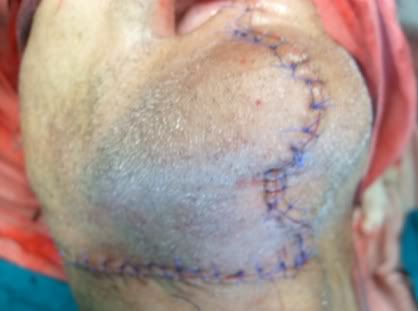 March 08, 2011 05:35 PM Eastern Daylight Time
March 08, 2011 05:35 PM Eastern Daylight Time
ROCHESTER, Minn.–(BUSINESS WIRE)–Here are highlights from the March issue of Mayo Clinic Health Letter. You may cite this publication as often as you wish. Reprinting is allowed for a fee. Mayo Clinic Health Letter attribution is required. Include the following subscription information as your editorial policies permit: Visit HealthLetter.MayoClinic.com or call toll-free for subscription information, 1-800-333-9037, extension 9771.
Getting Rid of Ulcer Pain
ROCHESTER, Minn. — There’s no need to put up with gnawing stomach pain due to ulcers. Most peptic ulcers can be cured in a matter of weeks, according to the March issue of Mayo Clinic Health Letter.
Peptic ulcers occur in the stomach or in the uppermost part of the small intestine (duodenum). The predominant symptom is a burning pain anywhere from the navel to the breastbone. Pain might last a few minutes to several hours. Typically, pain is worse when the stomach is empty and may flare at night. often, symptoms improve with eating food or by taking medication that reduces stomach acid.
Until 1980, doctors thought lifestyle factors such as stress and spicy foods caused ulcers. That’s not the case. It’s now known that the common bacteria Helicobacter pylori (H. pylori) often are the culprit behind ulcers. The bacteria damage the acid-tolerant lining of the stomach or duodenum, allowing stomach acid to reach more sensitive tissue underneath. The result is irritation and more tissue damage.
Regular use of anti-inflammatory pain medications is another common cause of ulcers. The medications can irritate and inflame the lining of the stomach, which can lead to ulcer development. Anti-inflammatory medications include celecoxib (Celebrex), diclofenac (Voltaren), ibuprofen (Advil, Motrin, others), naproxen (Aleve, Naprosyn) and ketoprofen. Aspirin also increases the risk of peptic ulcers.
an ulcer diagnosis is based on symptoms, medical history and imaging of the digestive tract. Blood tests, breath tests and stool samples may be used to check for H. pylori.
Regardless of the cause, treatment focuses on protecting the stomach or duodenum from stomach acid. A physician will likely prescribe one or more acid-reducing medications. if H. pylori is the cause, antibiotics also may be prescribed. Ideally, patients refrain from taking any anti-inflammatory medications.
With proper treatment, ulcers usually heal within a few weeks. While lifestyle factors aren’t the primary causes of ulcers, they can contribute to worsening symptoms. to encourage healing, it’s important to manage stress, stop smoking and avoid alcohol.
Mayo Invention Depicts Stiffness of Organs, Helps Doctors Diagnose Liver Disease
ROCHESTER, Minn. — A new diagnostic imaging tool invented at Mayo Clinic helps doctors know how internal organs feel to the touch, according to the March issue of Mayo Clinic Health Letter.
Called magnetic resonance elastography (MRE), the technology merges the age-old diagnostic practice of using touch — known as palpation — with high-tech magnetic resonance imaging (MRI).
MRE uses sound waves to vibrate soft tissues within the body, then captures and analyzes the characteristics of how the tissues vibrate. that information is used to create an image that depicts the relative stiffness of the body tissues and organs.
Mayo Clinic and other select medical centers are using MRE to diagnose early stages of liver disease. A healthy liver is soft and supple. Early liver disease causes a stiffening of the liver tissues from fibrosis, which can be detected quickly and painlessly with MRE. When diagnosed early, fibrosis can be halted or reversed with proper treatment. Advanced fibrosis can only be treated with liver transplant.
Previously, the only way to diagnosis liver fibrosis was by taking tissue samples (biopsies) using needles. This approach didn’t always produce accurate results. The sample could have come from healthy areas of a diseased liver.
Mayo Clinic researchers are studying MRE as a tool to aid in the diagnosis of other diseases and conditions, including breast cancer, brain injury, Alzheimer’s disease and musculoskeletal diseases.
Telomeres — the end Caps to Chromosomes — Provide Hints about Benefits of Healthy Living
ROCHESTER, Minn. — new findings about the protective end caps to DNA-filled chromosomes suggest that healthy lifestyles might influence a person’s genetic code, according to the March issue of Mayo Clinic Health Letter.
The research focuses on telomeres, end caps present on every DNA-filled chromosome. Telomeres often are likened to the plastic ends on a shoelace that prevent unraveling. Likewise, telomeres keep DNA within a chromosome from unraveling, becoming damaged or from accidentally linking to another chromosome.
Researchers have looked at both telomere length and changes over time. When healthy cells divide to facilitate healing or renew tissue, the DNA-containing chromosome within the cell nucleus divides, too. each division shortens the telomeres. Cells with shortened telomeres may lead to damaged chromosomes or may spark tumor growth. as a result, telomere length is emerging as a marker for the process of aging. But related research has found that the telomere shortening process can be slowed, stopped or even reversed with the enzyme telomerase.
Preliminary research shows that a healthy lifestyle increases telomerase activity. One three-month study found a 29 to 84 percent increase in telomerase activity among participants who ate a plant-based diet, walked briskly 30 minutes a day and underwent stress management therapy.
so far, there’s no known cause-and-effect relationship between telomeres and disease. But telomere health appears to be most enhanced by a healthy diet, exercise and stress management. these new discoveries suggest that a healthy lifestyle may be protective down to an individual DNA strand.
Mayo Clinic Health Letter is an eight-page monthly newsletter of reliable, accurate and practical information on today’s health and medical news. to subscribe, please call 1-800-333-9037 (toll-free), extension 9771, or visit HealthLetter.MayoClinic.com.